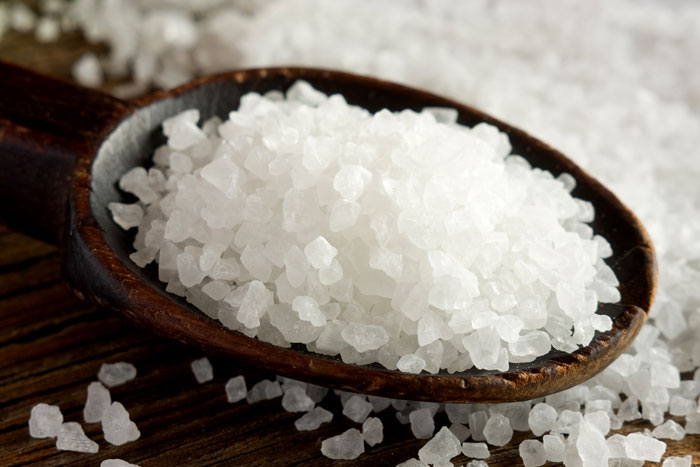
EVERYTHING YOU SHOULD KNOW ABOUT SALT INTAKE
It’s not as bad as it used to be but I still get messages every year from a lot of people on a diet extremely low in salt. Some of this might stem from their diet coach recommending this or just from what they have gathered on their own and think is right. If that’s you or if you have a friend who you think would benefit from this information please share it with them so everyone can maximize their physiques and performance that we spend so much time dedicating our efforts.
Let’s just start off with some point/counter-point about why sodium is so important for us.
First, sodium regulates blood volume and when working out in the gym or performing high intensity exercise a higher blood volume means we get better nutrient and oxygen delivery to muscle cells, and also the removal of toxins. With a low sodium diet blood volume will be low delivering less oxygen/nutrients to the muscles, and greater accumulation of toxins resulting in less than desired recovery and weakness. This is hardly what we want. For those of you who feel chronically fatigued in the gym, take a look at your sodium intake.
Second, water always follows sodium. That freaks people out, but it shouldnt because with enough salt in your diet you wont look “puffy”. However, limiting salt to very low levels WILL make you look watery/puffy due to the body releasing a hormone called Aldosterone. Aldosterone works to keep sodium from leaving the body so it holds onto every bit it can. When someone with a normal sodium intake urinates they also eliminate water (sodium follows water remember) but when Aldosterone is present ( due to low sodium levels) no sodium is excreted and is reabsorbed back into the body along attracting water that follows it. The result- water retention from a low sodium diet. It’s ironic that people drop sodium to rid water and it actually makes the opposite happen. (physique athletes competing on stage, remember that part during peak week- never drop sodium low).
Third, low sodium throws off potassium levels. We know that potassium is an important electrolyte inside the muscle cells, and guess what delivers it there? Yup, sodium. It takes 3 parts sodium to deliver 1 part potassium inside the muscle. Without enough sodium we are looking at a flat, tired, less optimally performing muscle. But here’s a scary thing to consider- the process of sodium moving potassium inside the cell is actually pretty demanding on the metabolism and takes energy to go through the process. Without these processes going on like normal the body can down-regulate metabolism since the body isnt expending energy to perform these functions. So a low sodium diet can actually lead to a slower metabolism.
One more thing about potassium- when aldosterone is present we know sodium is reabsorbed, but potassium is actually excreted causing weakness, impaired performance, flat muscle’s, and cramping. And speaking of cramping….
Fourth, CRAMPS. I dont even need to go into the science of this. Low salt means low potassium levels which means cramps. Having enough salt helps to fix this.
Fifth, carbohydrate storage. Carbs need water to turn into glycogen in the muscle, but also need sodium to help glucose and water go through the sodium/glucose transporter (SGLT-1). This is important because this transporter has to carry sodium and glucose together, it wont just carry one. Some of you who have tried to carb up on a low salt diet notice you feel bloated, and you dont fill out as well- low salt is the problem.
Sixth, lets talk about how much sodium to have and what kind. (if you are on a low sodium diet due to doctors orders, obviously this doesnt apply to you). I like to recommend that my athletes keep salt HIGH, and by that I believe 3-5g of sodium a day is very sufficient for what we do in the gym. If you are someone who works at a desk all day and the only activity you get is the gym, you may be better off around 3g of sodium. If you work outside and sweat a lot, or consume a LOT of water (2 gals or more a day) then you need to have higher sodium levels. Most dont realize that the higher your water intake is the more sodium is needed due to sodium being excreted in the urine.
An easy way to get sodium is through seasonings on food, condiments like mustard, or foods like pickles or tuna, even bread products have a significant amount of sodium. The best way in my opinion is to use sea salt with your meals.
Finally, what to expect. If you have been low sodium you will notice when you get levels up to where they need to be you will gain some weight. Dont be alarmed that’s just the muscle cells filling out like they should be and it’s good weight. Similar to when someone starts creatine supplementation, it’s exactly what you want and scale weight balances out in a couple of days. You will notice fuller muscles in the gym, a better looking physique, better workouts and performance, and in the long run better muscle growth.
